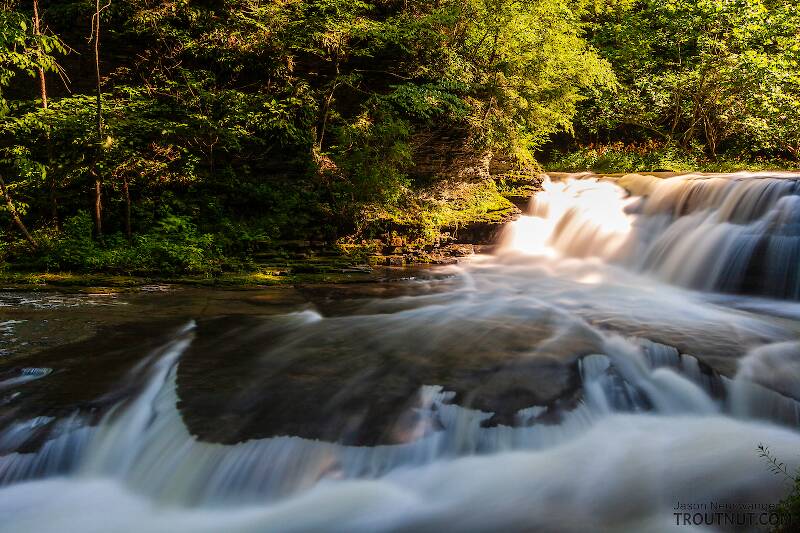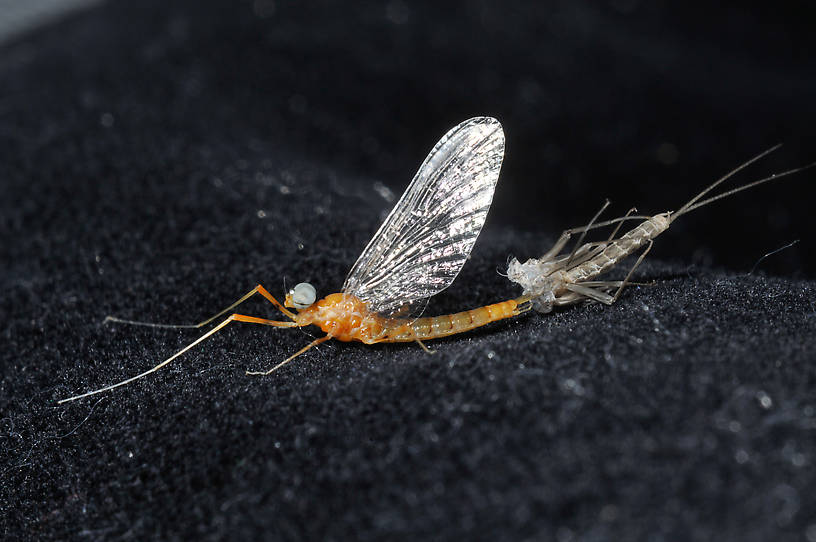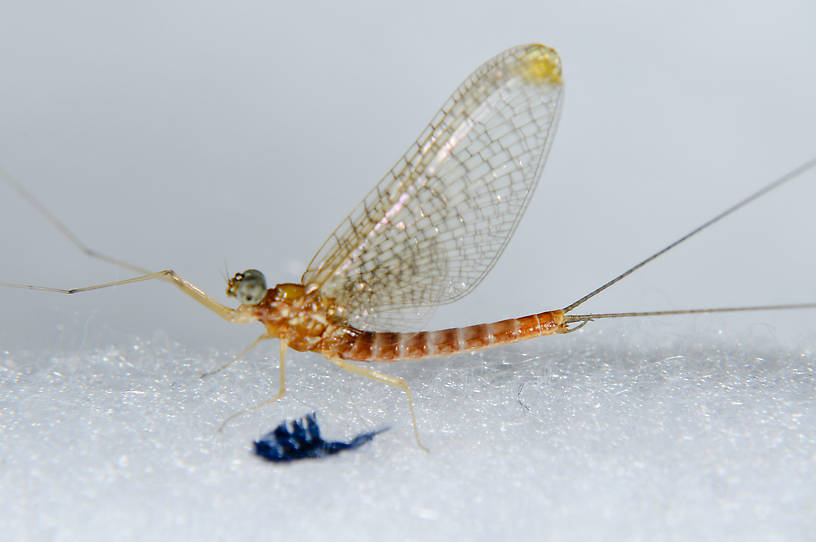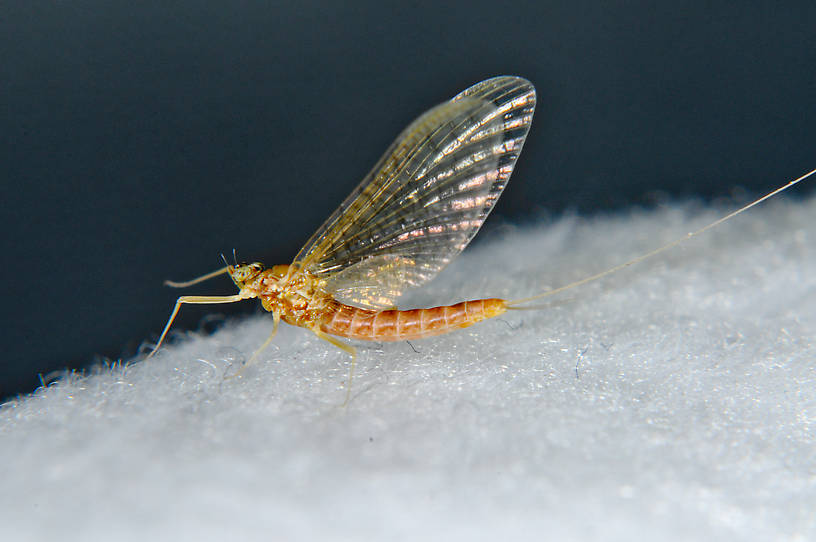
Blue-winged Olives
Baetis
Tiny Baetis mayflies are perhaps the most commonly encountered and imitated by anglers on all American trout streams due to their great abundance, widespread distribution, and trout-friendly emergence habits.

Mayfly Species Cinygmula mimus
Where & when
In Mayflies: An Angler's Study of Trout Water Ephemeroptera , Knopp and Cormier report "occasional" fishable hatches of this species from southern Alberta, and its known range extends down the east slope of the Rockies into the United States.In 11 records from GBIF, adults of this species have been collected during July (36%), May (27%), June (18%), August (9%), and September (9%).
In 14 records from GBIF, this species has been collected at elevations ranging from 3202 to 9285 ft, with an average (median) of 7156 ft.
Species Range
Nymph biology
Environmental tolerance: Prefers cool water
Physical description
Most physical descriptions on Troutnut are direct or slightly edited quotes from the original scientific sources describing or updating the species, although there may be errors in copying them to this website. Such descriptions aren't always definitive, because species often turn out to be more variable than the original describers observed. In some cases, only a single specimen was described! However, they are useful starting points.
Male Spinner
Wing length: 10 mm
A rather large species, the wings tinged with yellowish brown; spine on inner margin of each side of penes only.
Head reddish to purplish brown. Thoracic notum light chestnut brown; remainder of thorax yellowish brown with reddish tinges; paler yellowish or creamy areas anterior to wing root, and below bases of wings on pleura. Legs light yellowish brown; tibia-tarsal joint and tarsal joinings of fore leg darker brown; claws of all legs brownish; tarsal joinings of middle and hind legs narrowly brown, distal tarsal joints tinged with light brown. Wings hyaline, the membrane tinged with yellowish brown, especially evident in hind wing and basal half of fore wing. Venation light yellowish brown, the cross veins often faintly red-brown. Abdominal segments 2-7 semi-hyaline, pale purplish to light madder brown; extreme anterior margin colorless, posterior margins narrowly darker. Sternites very similar to tergites, but somewhat paler; no dark mid-ventral markings. Segments 8-10 opaque, yellowish brown with a tinge of purple or madder; sternites more yellowish than tergites. Tails yellowish brown, often with faint red-brown tinge in basal portion; joinings opaque, faintly darker. Forceps light red-brown, penes yellow-brown; penes divergent almost from base, bearing on each side a single spine on inner margin. (See fig. 103, gartrelli).
The yellowish brown tinge of the wings, the absence of dark ventral markings and the details of structure of the penes, when taken together, distinguish this from other allied species.
Specimens of the Mayfly Species Cinygmula mimus
2 Male Spinners
1 Female Spinner
Start a Discussion of Cinygmula mimus
References
- Knopp, Malcolm and Robert Cormier. 1997. Mayflies: An Angler's Study of Trout Water Ephemeroptera . The Lyons Press.
- Needham, James G., Jay R. Traver, and Yin-Chi Hsu. 1935. The Biology of Mayflies. Comstock Publishing Company, Inc.
Mayfly Species Cinygmula mimus
Species Range
Resources
- NatureServe
- Integrated Taxonomic Information System
- Global Biodiversity Information Facility
- Described by Eaton (1885)





